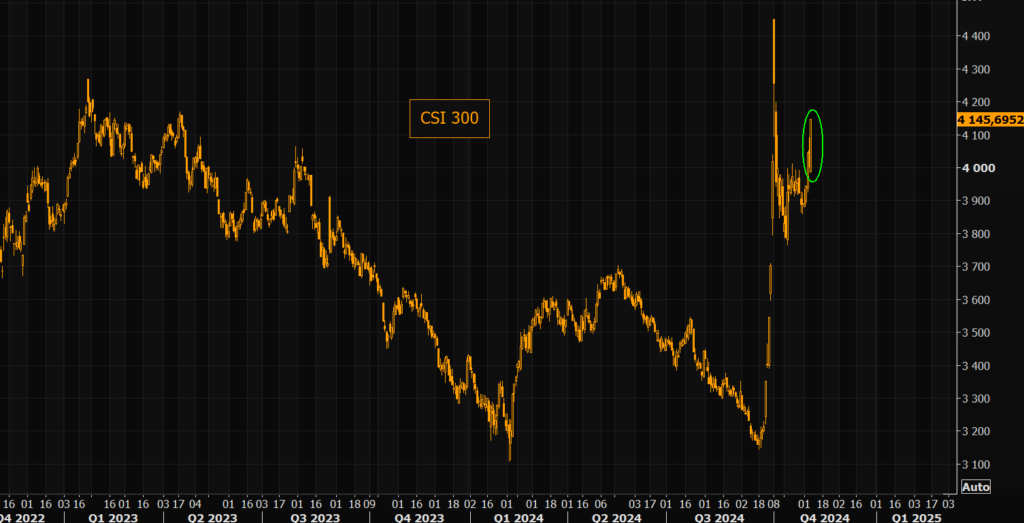The ongoing economic landscape is dominated by China’s evolving financial strategies, particularly in relation to its stock market, exemplified by the CSI 300 index. As recent trends in this index indicate a stronger upward movement following a series of corrections, investors are encouraged to reassess their positions and consider the implications of China’s fiscal maneuvers. The phrase “bazooka bigger than tariffs” underscores the notion that any stimulus or support measures introduced by the Chinese government must be significantly impactful to offset the pressures exerted by tariffs, particularly in the context of international trade tensions.
The CSI 300 index, which tracks the performance of 300 large companies listed on the Shanghai and Shenzhen stock exchanges, has recently shown a notable recovery, marking its largest upward movement since the correction that followed the previous market euphoria. This rebound is significant as it reflects both the market’s resilience and the potential effectiveness of the stimulus measures being implemented. It highlights a context of recovery where investors should be mindful of the broader economic implications, especially in relation to trade disputes and their corresponding effects on market sentiment.
As the market rallies, there is a growing sentiment among traders that a further increase in the index could lead to a scenario where the majority of market participants feel ‘implicitly short.’ This sentiment suggests a potential shift in investor behavior, where many may begin to reconsider their long positions amid fears of a market correction. The dynamic indicates the psychological aspect of trading where potential overexuberance could create vulnerability in the face of unexpected market volatility. Investor sentiment often plays a critical role in market movements, especially when transitioning from corrections to recoveries.
The reference to the “bazooka” metaphorically emphasizes the necessity of robust economic interventions designed to stimulate growth and confidence in the market. Such interventions might include monetary policy adjustments, fiscal stimuli, or strategic investments aimed at fostering economic stability and expansion. The effectiveness of these policies is paramount; they need to not only match but surpass the negative implications associated with trade tariffs that have affected numerous sectors, particularly those heavily reliant on international trade.
Moving forward, it is essential for stakeholders to remain vigilant and responsive to shifts in both domestic and global economic indicators. Keeping track of policy changes, market trends, and geopolitical developments will be crucial for making informed investment decisions. As the market recovers and the CSI 300 potentially shows continued upward movement, understanding the interplay of these factors will help mitigate risks associated with trade disputes and tariffs while taking advantage of growth opportunities.
In conclusion, the current market dynamics surrounding China’s economic strategies highlight a complex interrelationship between trade policies and stock market performance. The trajectory of the CSI 300 serves as a focal point for investors, suggesting that the Chinese government’s efforts to implement substantial fiscal initiatives are crucial in navigating the challenges posed by tariffs. As the market evolves, remaining proactive and adaptable to these changes will be essential for capitalizing on potential growth while managing the risks associated with market fluctuations.

